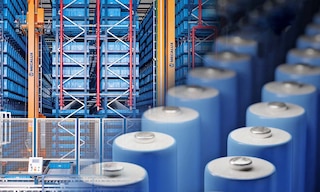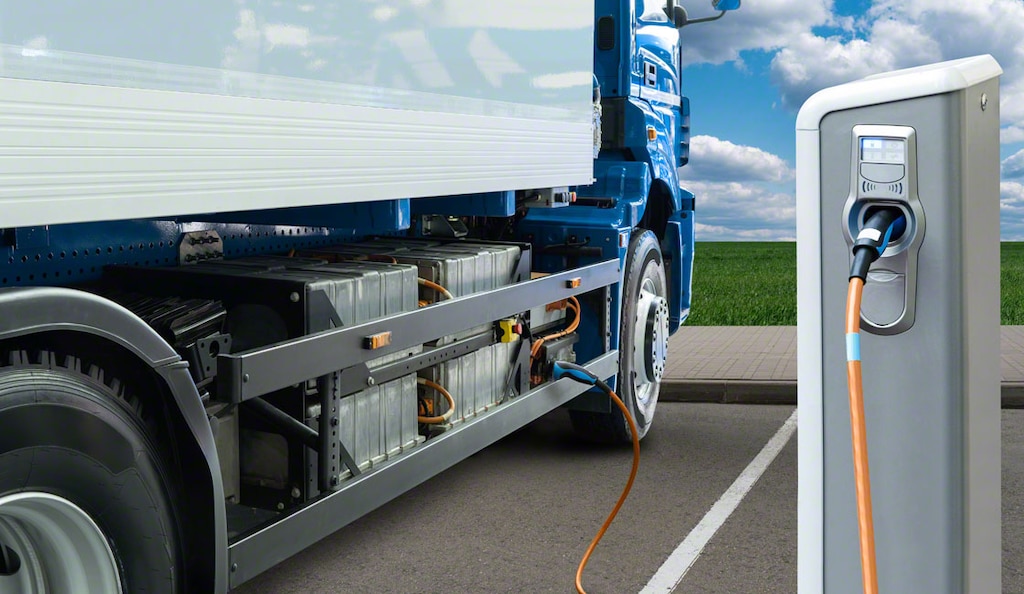
Sodium batteries: the path to greener logistics?
As we move towards a more sustainable, emissions-free world, the search for emerging technologies like sodium batteries could revolutionize the way we store and use energy.
The demand for energy storage is growing, along with concerns about the availability of materials for traditional batteries. That’s why it’s essential to explore the advantages, challenges, and potential impact that sodium batteries could have in various industries, particularly logistics.
What are sodium batteries?
Sodium batteries are energy storage devices that employ sodium as the primary material for the chemical reaction that generates electricity. Like lithium-ion batteries — widely used in electronic devices and electric vehicles — sodium batteries are designed to store and release electrical energy in a controlled manner.
Sodium batteries are a promising alternative to lithium-ion batteries in terms of wealth of resources and storage capacity. However, they’re still under development, and more research is needed to overcome technical challenges and achieve effective implementation.
Pros and cons of sodium batteries
Lithium and sodium both belong to the same group of alkaline metals in the periodic table. The main benefit of sodium batteries is that sodium is more abundant in the earth's crust, which makes this raw material more economical than lithium.
In MIT Technology Review, Casey Crownhart writes: “Unlike lithium, sodium can be produced from an abundant material: salt. Because the raw ingredients are cheap and widely available, there’s potential for sodium-ion batteries to be significantly less expensive than their lithium-ion counterparts if more companies start making more of them.”
Sodium batteries can also offer a larger storage capacity compared to lithium-ion batteries, making them more suitable in scenarios requiring a large amount of energy.
Nevertheless, despite their advantages, sodium batteries do have some technical hurdles to clear. For example, sodium tends to form dendrites (tree-like crystals) during charging and discharging cycles, which can cause short circuits and shorten battery life. Likewise, sodium batteries are still in the research and development stages, so they’re not as common or mature as lithium-ion batteries in terms of technology or market availability.
How do sodium batteries work?
Similarly to other rechargeable batteries, sodium batteries generate electricity through reversible chemical reactions. While the exact details may vary according to the battery’s design and specific chemistry, sodium batteries typically work like this:
- Cells and electrodes. A sodium battery consists of two electrodes — anode and cathode — immersed in an electrolyte, an ionic conductor that facilitates the flow of ions between the electrodes. An oxidation reaction occurs at the anode, while a reduction reaction takes place at the cathode.
- Charging. During the battery charging process, an electrical current is applied through the electrodes. At the anode, sodium ions are released and move toward the cathode through an electrolyte. At the cathode, energy is stored through the intercalation of ions or compounds that contain sodium in their structure.
- Discharging. When the battery is discharged, the reaction is reversed. Sodium ions migrate from the cathode to the anode, releasing electrons in the process. These electrons can be collected by an external circuit and used to power electrical devices.
- Electricity generation. The electric current flows from the anode to the cathode through the external circuit, supplying power to connected devices. Sodium ions continue to move between the electrodes along the electrolyte, keeping the chemical reaction active.
- Charge and discharge cycle. Sodium batteries can be recharged by repeating the charge and discharge process. The more times this cycle is performed, the more important it is that the chemical reactions are reversible and that side effects that would reduce the battery’s capacity over time are minimized.
The exact chemistry and design of sodium batteries vary depending on the specific technology adopted. Different types of electrodes and electrolytes can influence the efficiency, lifespan, and other properties of the battery.
Applications of sodium batteries in logistics
Thanks to their ability to store energy efficiently, sodium batteries could have multiple applications in logistics. Here are some of those applications:
- Energy storage in warehouses. Sodium batteries could be employed to house energy during periods of low demand and release it at peak demand, helping to lower electricity costs and improve energy efficiency.
- Electric vehicles. Sodium batteries could be used in electric vehicles (EVs), including trucks, forklifts, and other handling equipment, offering greater autonomy than lithium-ion batteries.
- Power backup systems. Emergency power systems provide energy in the event of an interruption or other incident to avoid stopping logistics activity.
- Smart charging stations. Sodium batteries could be integrated into EV charging stations to provide a greener and more stable energy source.

More sustainable logistics
Sodium batteries could play a crucial role in optimizing logistics operations by providing a reliable source of energy and improving sustainability in several areas of the supply chain. But sodium batteries are still being developed, so their adoption in logistics applications will depend on their technical and economic viability in the future.
The quest for energy efficiency has become a priority that affects not only logistics but all supply chain sectors overall. This is because traditional energy sources have a limited supply, an increasingly hefty price tag, and a growing impact on the environment.
At Interlake Mecalux, for example, we use supercapacitors on our automated Pallet Shuttle system to store large amounts of energy. Supercapacitors are ideal for this automated storage and retrieval system: they leverage their own energy to recharge in a matter of seconds, enabling them to operate 24/7.
Interested in reducing your facility’s energy consumption? Get in touch. An Interlake Mecalux expert will advise you on the best solution for your business.
